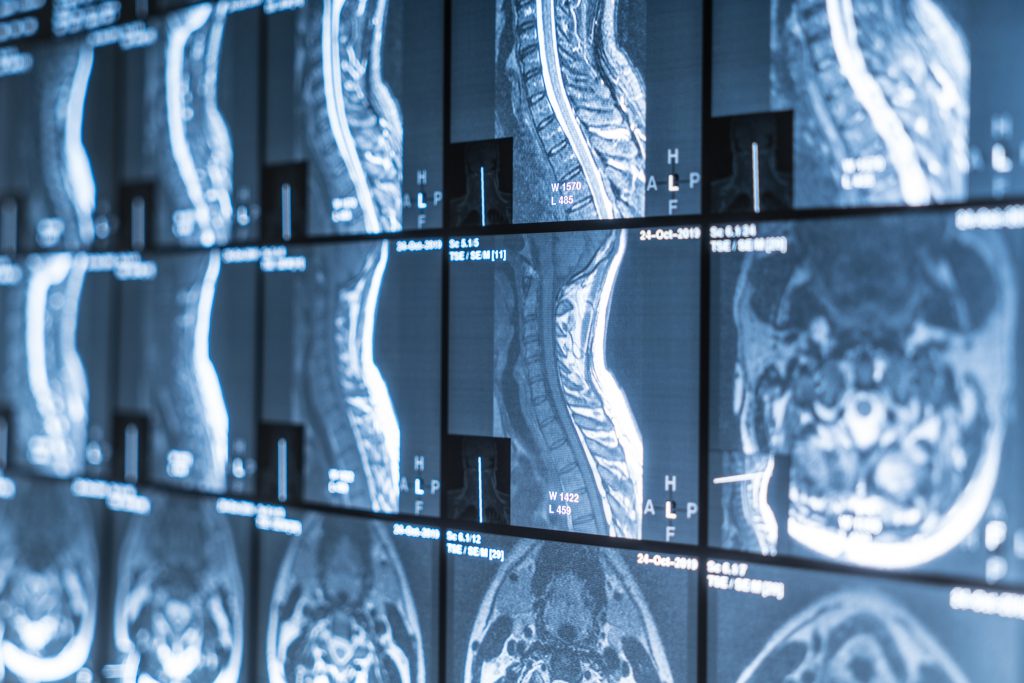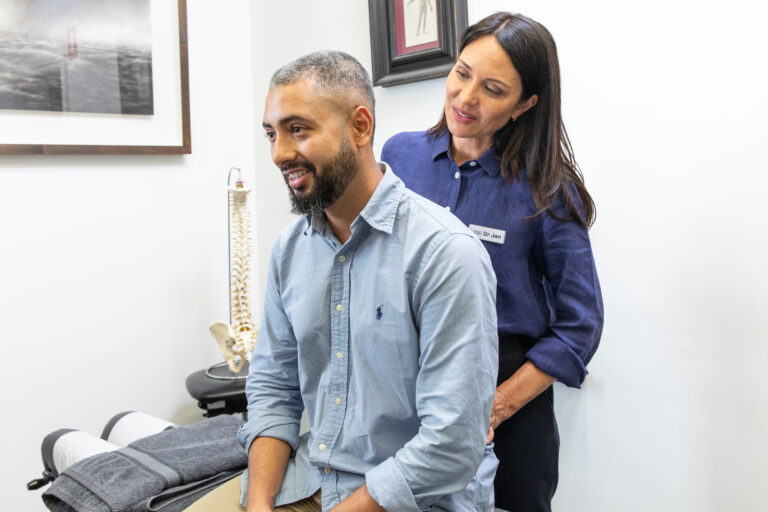Globally, back pain is an enormous personal and societal problem. Every year, an estimated 577 million people world-wide experience back pain.1 Providing care for patients with back pain is a core business for the chiropractic profession as it is the most common symptom presenting to chiropractors globally.2
The initial assessment is a vital screening step in providing care for patients who present with a new episode of back pain. Chiropractors and other primary care providers (GPs, physiotherapists, osteopaths) are confronted daily with the rare but real possibility that patients who present with back pain may have cancer as an underlying cause.3 Early detection of life-threatening cancers can increase survival and quality of life through timely intervention. Despite what may have been taught in clinical training, no informative screening tool exists to raise suspicion of cancer in people who seek care for back pain.
The statement above may come as a surprise. The problem lies not in the quality of chiropractic education, but that guidelines recommended ‘red flag’ screening questions on their own (e.g. night pain, weight loss, history of cancer, etc.) are of little use to the chiropractor when deciding if a patient has cancer masquerading as back pain!4,5 It is also concerning that the lack of effective screening tools for serious pathology in back pain likely contributes to excessive use of medical services globally, such as diagnostic imaging6 which can result in unnecessary patient concern and elevated health costs.
My program of research aims to improve clinical decision making during the initial assessment of back pain. Recently, I proposed a new framework to identify red flags for potentially serious spinal pathologies,7 but more primary research is needed. To move this field forward, a large scale research study that matches the patient presentation (back pain) with cancer diagnosis must be conducted.
During my short research career, I have had the privilege of collaborating with world leaders in back pain research. A new project that I am leading brings together twelve multidisciplinary researchers from the University of Oxford (UK), University of Sydney, University of Technology Sydney and Macquarie University. The research is funded by Macquarie University in partnership with the Australian Chiropractors Association (ACA).
The aims of our study are to:
- estimate the proportion of patients who have cancer as the underlying cause of their back pain; and
- develop a diagnostic screening model to help identify patients at greater risk of having underlying cancer as the cause of their back pain.
Very large sample sizes are required to achieve these aims. No such database exists in Australia. Our solution is to use the United Kingdom (UK) Clinical Practice Research Datalink (CPRD), a nationally representative routine care database of 60 million patients from 2,000 practices in the UK, linked with the National Cancer Registration and Analysis Service (NCRAS).
Briefly, this is a diagnostic accuracy study that will use the CPRD to collect information on back pain presentations from an estimated two million patients, matched to the NCRAS to ascertain cancer diagnosis. We will confirm cancer as the cause of their back pain if there is a cancer diagnosis recorded in the registry within three months of the initial visit. Features from the clinical consultation will be collected from the CPRD, along with detailed patient information on any previous history of cancer in the previous ten years (cancer site, tissue type and stage) from linkage with the national cancer registry. This will be the first study to use a nationally representative sample to address screening for cancer in patients with back pain.
The partnership between the ACA and Macquarie University is pivotal to the success of this project and will raise the profile of the chiropractic profession as a discipline leader in healthcare decision making. In addition, the collaboration between the ACA and Macquarie University will:
- promote greater international cross-discipline research (chiropractors, physiotherapists, general practitioners, oncologists);
- create a new model for diagnosis and clinical decision making in primary care;
- empower chiropractic researchers (four in this study) to extend their skill set within a world-leading research team; and
- provide opportunities for graduate students to embark on a research career (MRes or PhD) in this important field. I am currently seeking interest from university graduates. If you have been considering a higher degree in research, please contact [email protected].
Ultimately, this research will help all clinicians move from screening for cancer by ‘intuition’ towards an evidence-based approach. The chiropractic profession (clinicians and researchers) will be an important part of this change.
Dr Aron Downie
Project team
Aron Downie PhDa, Chris Maher DMedScb, Mark Hancock PhDa, Simon French PhDa, Arianne Verhagen PhDc, Gustavo Machado PhDb, Hazel Jenkins PhDa, Michael Swain PhDa, Peter Stubbs PhDc, Brian Nicholson PhDd, Richard Hobbs PhDd, Clare Bankhead PhDd
a. Macquarie University, Sydney, Australia;
b. University of Sydney, Australia;
c. University of Technology, Sydney, Australia;
d. University of Oxford, UK.
References
- Wu A, March L, Zheng X, et al. Global low back pain prevalence and years lived with disability from 1990 to 2017: estimates from the Global Burden of Disease Study 2017. Ann Transl Med. Mar 2020;8(6):299. doi:10.21037/atm.2020.02.175
- French SD, Downie AS, Walker BF. Low back pain: a major global problem for which the chiropractic profession needs to take more care. Chiropractic & Manual Therapies. 2018;26(1)doi:10.1186/s12998-018-0199-6
- Deyo RA, Diehl AK. Cancer as a cause of back pain: frequency, clinical presentation, and diagnostic strategies. Journal of general internal medicine. May-Jun 1988;3(3):230-8.
- Verhagen AP, Downie A, Popal N, Maher CG, Koes BW. Red flags presented in current low back pain guidelines: a review. Eur Spine J. 04 July 2016 2016;25(9):2788-802. doi:10.1007/s00586-016-4684-0
- Verhagen AP, Downie A, Maher CG, Koes BW. Most red flags for malignancy in low back pain guidelines lack empirical support: a systematic review. Pain. Oct 2017;158(10):1860-1868. doi:10.1097/j.pain.0000000000000998
- Downie A, Hancock MJ, Jenkins H, et al. How common is imaging for low back pain in primary and emergency care? Systematic review and meta-analysis of over 4 million imaging requests across 21 years. Br J Sports Med. 2019;0:1-12. doi:10.1136/bjsports-2018-100087
- Finucane LM, Downie A, Mercer C, et al. International Framework for Red Flags for Potential Serious Spinal Pathologies. Journal of Orthopaedic & Sports Physical Therapy. 2020:1-23. doi:10.2519/jospt.2020.9971


